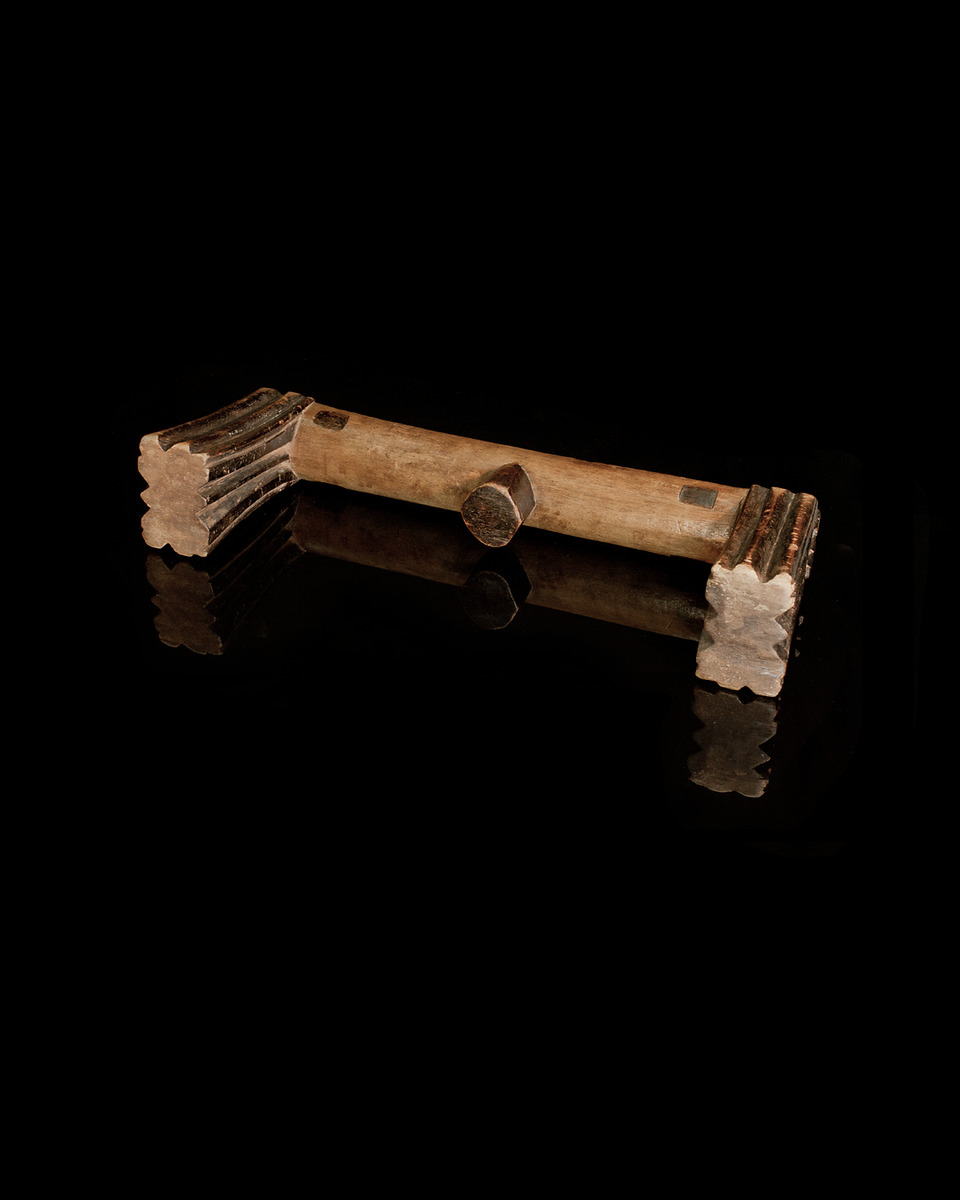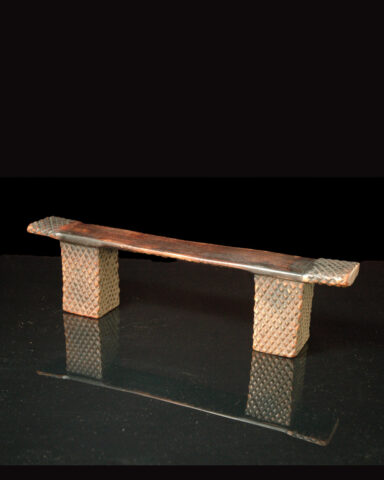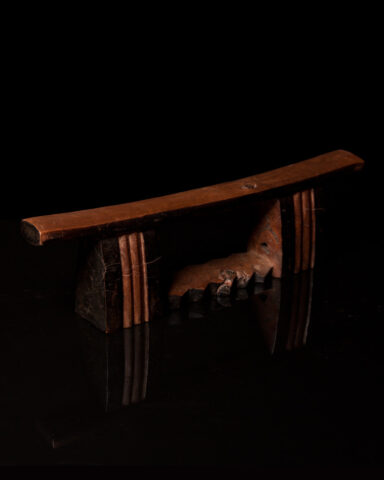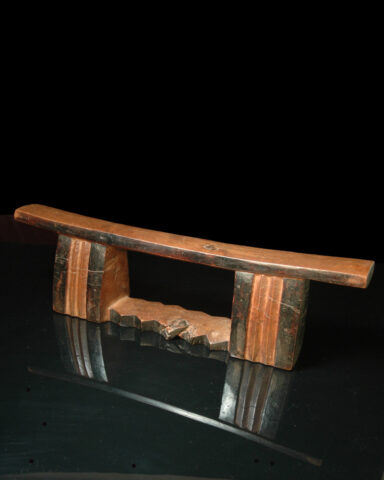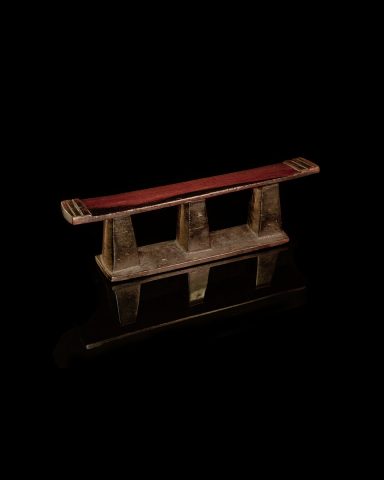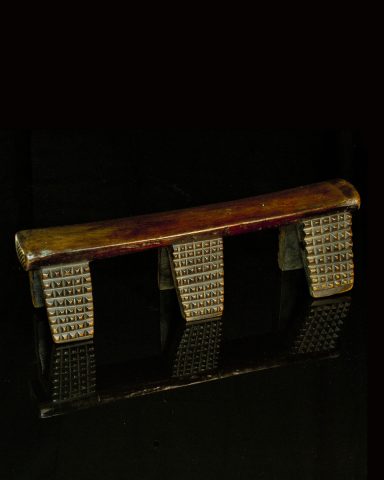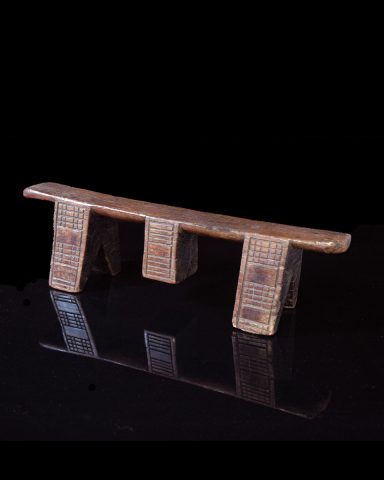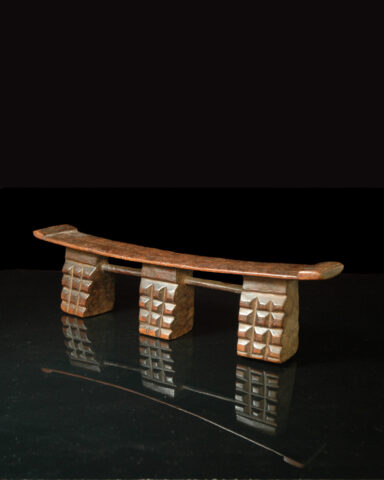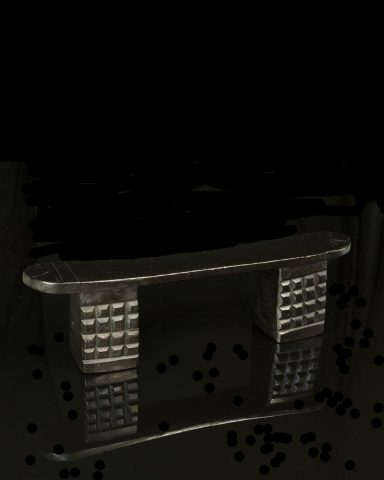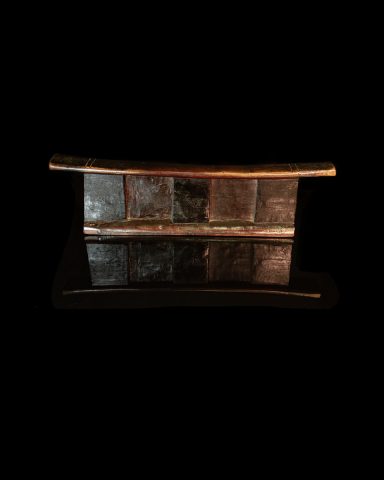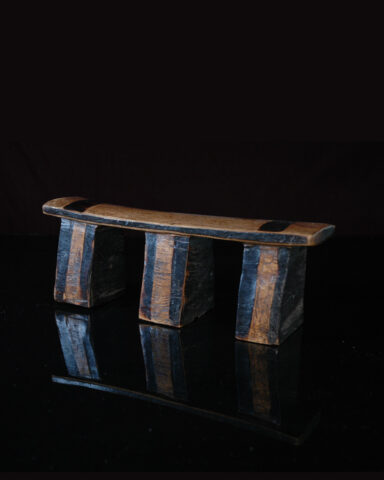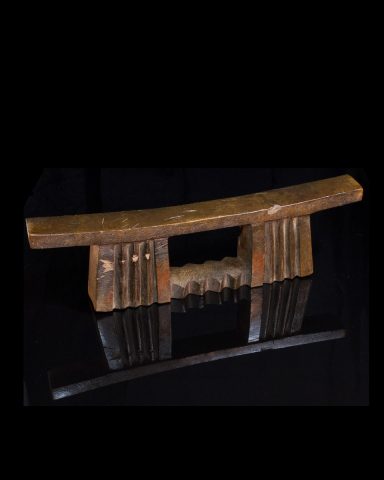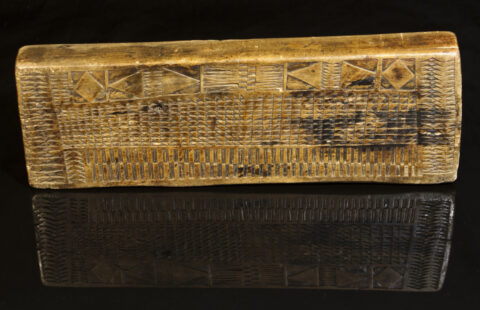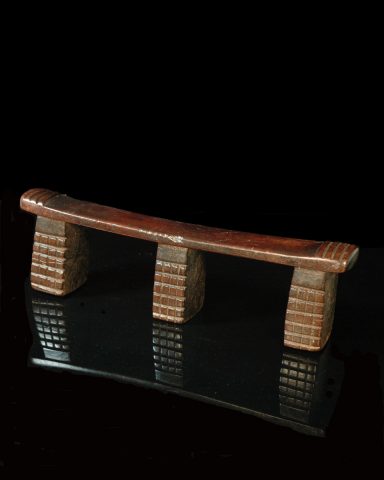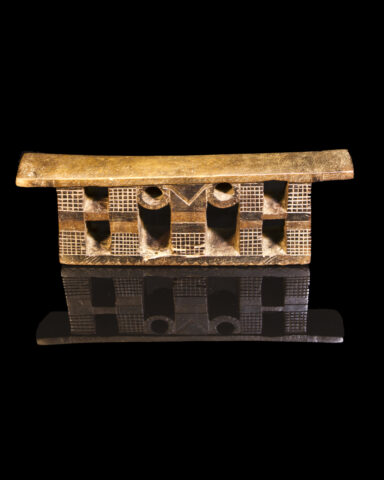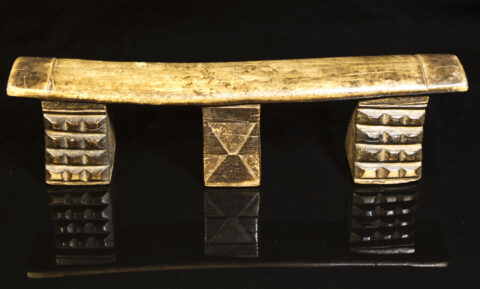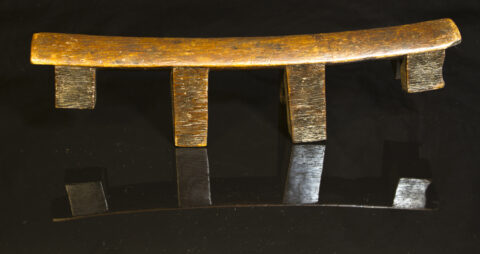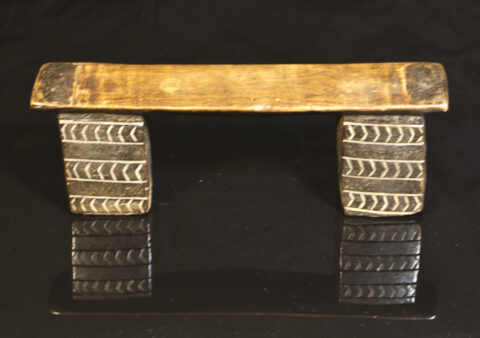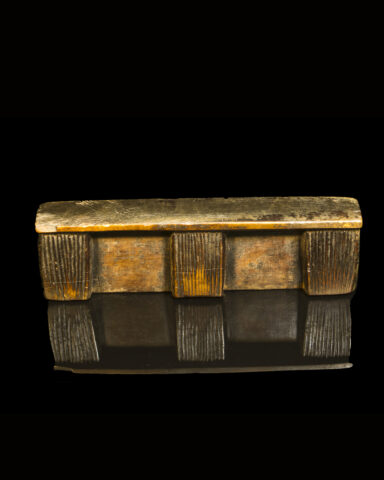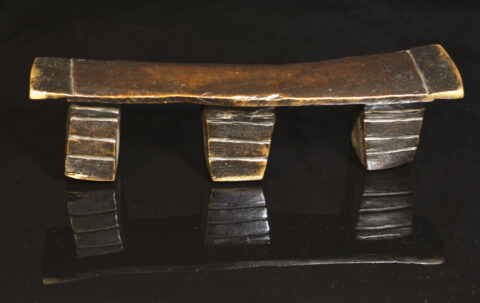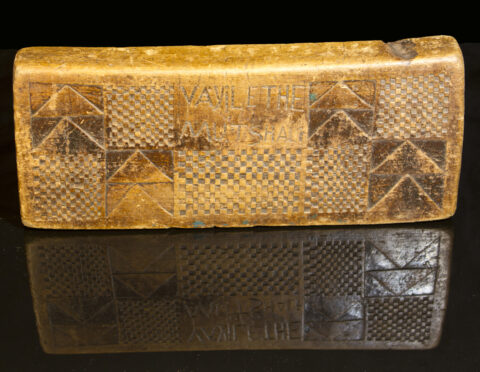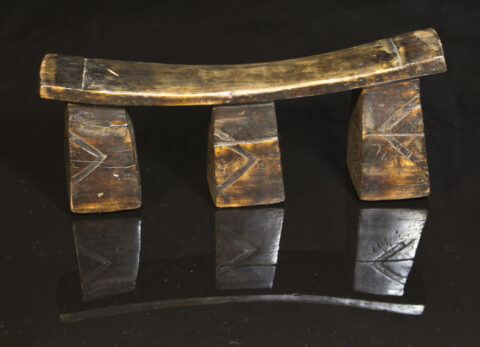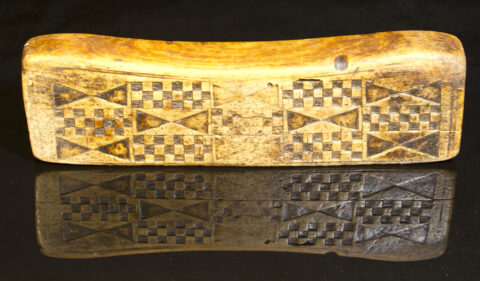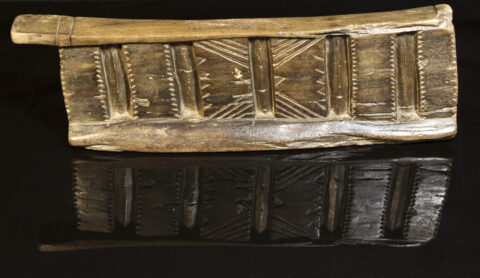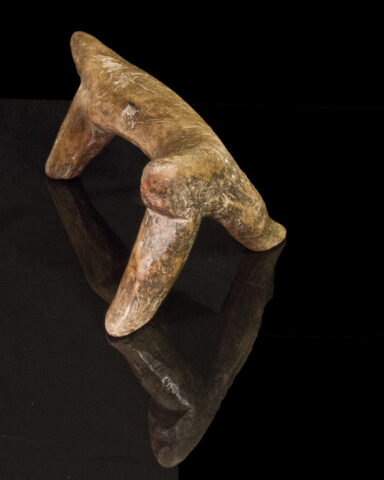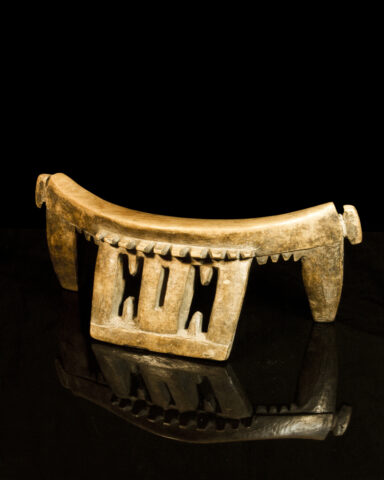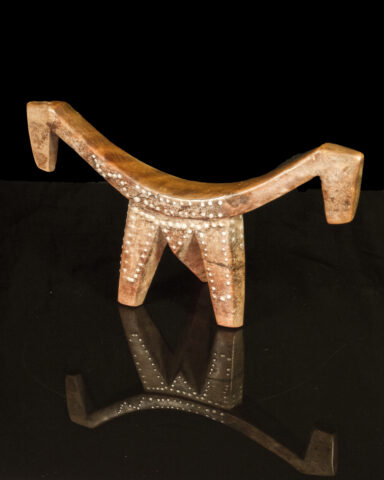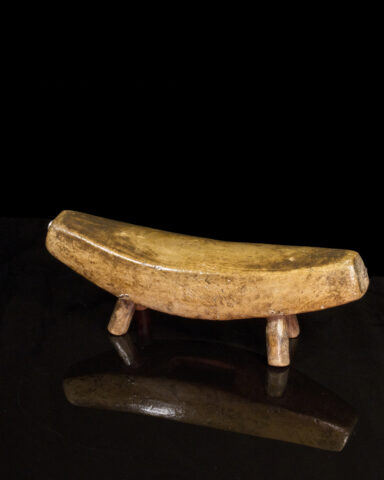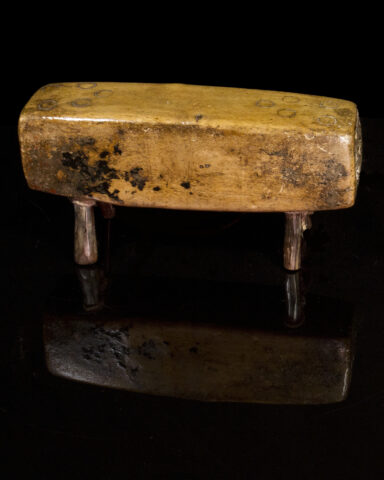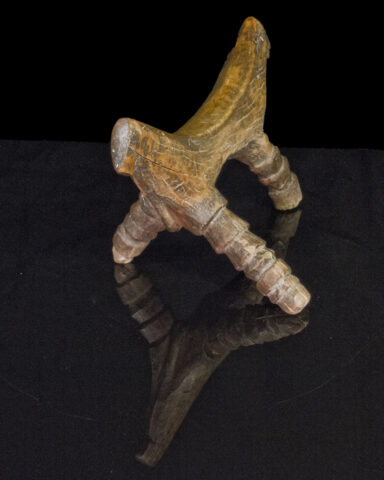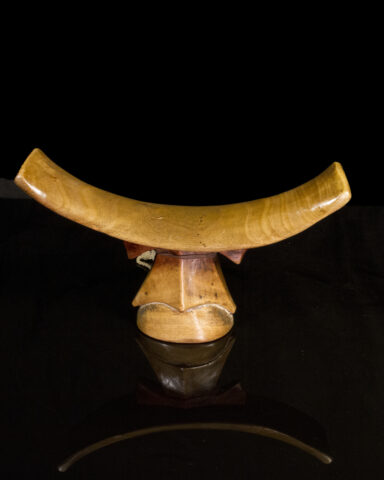Description
The Zulu people are part of the Nguni, an agrarian, homesteading culture living in Southern Africa. These headrests are hand sculpted from a single, hardwood block, and are either flat or curved on top. They often feature two (as in this object), or three legs or “links.” This specific piece is marked by vertical bevels on both links, in addition to to a small, cylindrical, metal object upon which the human neck rests. By social custom, the headrest is frequently offered to the bridegroom from the bride as a vehicle for communication with their Zulu ancestors. “(D)reams are considered to be sent by ancestors, and because dreams are dreamt on headrests, the headrest is a kind of antenna, and the strength of the signal is increased if the headrest is inherited from a senior relative” (Nettleton 2007). It is also believed to be symbolic of procreation with cattle and human descendants in agrarian societies. Imbued with the masculine quality of “ubunkunzi” (i.e., “like a bull”/“bullness”), the Zulu headrest signifies a virility indispensable to the survival of one’s family and the extended ethnic group.
REFERENCES:
Bishop, S.D. 1986. African Headrests. Scholar.ufs.ac.za.
Johannesburg Art Gallery. 1991. Art and Ambiguity: Perspectives on the
Brenthurst Collection of Southern African Art. Johannesburg: Johannesburg Art Gallery.
Nettleton, Anitra. 2007. African Dream Machines: Style, Identity and Meaning of African Headrests. Johannesburg: Wits University Press.


